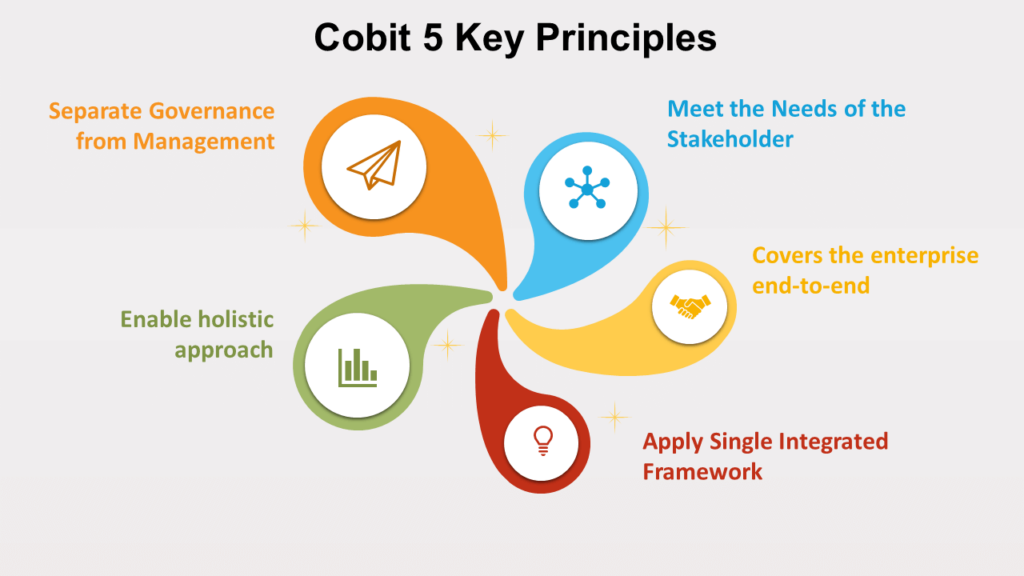From Solo Tech Pro to IT Leader: Thriving in Your New Management Role
Congratulations! You’ve climbed the IT ranks and landed your first IT Management position. Perhaps you’re joining a growing startup or stepping into a leadership role at an established company. While excitement likely fills you, a touch of apprehension might linger. Unlike previous roles, your new team may not boast the same level of technical expertise.
Fear not! This transition, although challenging, presents a unique opportunity to develop your leadership skills and build a strong, collaborative IT department. Here, we’ll explore key strategies to help you navigate this exciting new chapter in your IT career.
Table of Contents
Building a Strong Foundation: The Bedrock of Your IT Leadership Journey
As a newly minted IT Manager, the initial days can be a whirlwind of activity. However, taking a step back to establish a strong foundation is crucial for long-term success. Here’s how to build a solid base that empowers you and your team:
1. Unveiling Your Team’s Strengths:
- Skills Assessment: Go beyond a simple checklist. Conduct a comprehensive skills assessment that combines various methods to get a well-rounded picture of your team’s capabilities.
- Individual Meetings: Schedule one-on-one meetings to discuss professional goals, preferred work styles, and areas of expertise. This fosters trust and allows you to understand individual strengths and motivations.
- Skills Tests: Utilize targeted skills tests to evaluate technical proficiency in specific areas relevant to your team’s roles. Consider both written assessments and practical exercises.
- Performance Reviews: Review past performance records to gain insights into each team member’s past accomplishments, areas for improvement, and areas where they consistently excel.
2. Mapping Your IT Infrastructure:
Don’t underestimate the power of thorough documentation! Think of it as a detailed map of your IT landscape, guiding you through informed decision-making and efficient troubleshooting.
- Documentation Deep Dive: Meticulously review all existing IT documentation, including:
- Network Diagrams: Visual representations of your network infrastructure, outlining the physical layout of devices, connections, and security zones.
- Server Configurations: Detailed specifications of your servers, including hardware, software, operating systems, and security settings.
- User Manuals: Guides and instructions for various IT systems and applications used within your company.
- Fill in the Gaps: If documentation is incomplete or outdated, prioritize its update and implementation of a system for ongoing maintenance.
- Version Control: Utilize version control systems to track changes and ensure you’re always working with the most up-to-date documentation.
By investing time and effort into these foundational steps, you’ll gain a clear understanding of your team’s strengths and weaknesses, along with a comprehensive map of your IT infrastructure. This knowledge empowers you to make informed decisions, anticipate challenges, and ultimately lead your team toward success.
Building and Empowering Your Team
Your team is your greatest asset. Here’s how to foster a collaborative and empowering environment that unleashes their full potential:

1. Harnessing the Power of Diversity:
Technical expertise is crucial, but it’s just one piece of the puzzle. Embrace the power of a diverse team by appreciating a wider range of strengths:
- Soft Skills Spotlight: Recognize and value “soft skills” like communication, problem-solving, and customer service. Effective communication bridges gaps within the team and with external stakeholders. Problem-solving skills are essential for tackling technical challenges and identifying innovative solutions. Customer service orientation ensures excellent support for internal and external users.
- Building a Well-Rounded Team: When delegating tasks, consider the entire spectrum of skills within your team. For specialized needs or temporary project requirements, consider supplementing your internal talent with freelance experts from platforms like Toptal. Someone who excels at communication might be well-suited to lead project presentations, while a team member with strong analytical skills might be ideal for troubleshooting a complex technical issue. This creates a well-rounded team where everyone contributes their unique strengths for collective success.
2. Delegation: Let Your Team to Shine
Micromanagement stifles creativity and motivation. Instead, embrace strategic delegation:
- Strengths-Based Delegation: Delegate tasks based on each team member’s strengths and areas for development. This allows individuals to leverage their existing skills while also providing opportunities to learn and grow.
- Setting Clear Expectations: Provide clear instructions, outlining project goals, timelines, and deliverables. Encourage questions and open communication to ensure everyone is on the same page.
- Empowerment Through Ownership: Empower your team members to take ownership of their tasks. This fosters a sense of accountability, increases motivation, and allows individuals to develop problem-solving and decision-making skills.
3. Bridging the Communication Gap: Building a Collaborative Culture
Clear and consistent communication is the cornerstone of a successful team:
- Plain Language Communication: Avoid technical jargon whenever possible. Explain complex concepts in clear, concise language that everyone understands.
- Open Door Policy: Foster an open-door policy where team members feel comfortable approaching you with questions, concerns, or ideas. This promotes trust and transparency.
- Regular Team Meetings: Schedule regular team meetings to discuss project updates, share information, and address any challenges. This fosters collaboration and a sense of shared purpose.
By valuing diverse skill sets, empowering your team through delegation, and fostering open communication, you’ll cultivate a collaborative and supportive environment where everyone feels valued and motivated to contribute their best work.
Developing Your Leadership Arsenal: Sharpening Your Skills for Success
As an IT Manager, your leadership skills are just as important as your technical expertise. Here’s how to continuously develop your leadership arsenal and become a more effective leader:
1. Invest in Your Growth (Leadership Development, Leadership Skills):
Leadership is a lifelong learning journey. Embrace opportunities to hone your core leadership skills and stay ahead of the curve:
- Explore Learning Options: Consider online courses, in-person workshops, or personalized coaching programs focused on communication, delegation, motivation, conflict resolution, and strategic thinking. Look for programs specifically geared towards IT leadership
- Put Knowledge into Practice: Don’t just learn – apply it! Actively seek opportunities to implement your newly acquired skills within your team and department. Expand Your Network: Continuously connect and learn from other IT leaders. Utilize platforms like LinkedIn to join industry groups, connect with mentors, and follow thought leaders in the IT space.
2. Stay Current in the IT Landscape (IT Management, Leadership Training):
The IT field is constantly evolving. Here’s how to ensure your leadership practices stay current:
- Attend Industry Events: Participate in industry conferences, workshops, and webinars to stay abreast of the latest trends and best practices in IT management and leadership
- Embrace Continuous Learning: Develop a habit of continuous learning. Read relevant publications, subscribe to industry blogs, and participate in online communities to stay connected with peers and experts
3. Find a Mentor (Mentorship):
A mentor can be an invaluable resource, offering guidance and support as you navigate the challenges and opportunities of your new role:
- Seek Experienced Guidance: Consider finding a mentor, or an experienced IT leader who can provide valuable insights and answer your questions. This mentorship can be formal or informal, but the key is to find someone you respect and trust.
By continuously investing in yourself, staying current with industry trends, and seeking guidance from a mentor, you’ll develop a robust leadership arsenal that empowers you to lead your team to success.
Strategic Planning and Execution: Your Course to Success
Now that you’ve built a strong foundation and empowered your team, it’s time to translate your vision into action. Here’s how to develop a strategic plan and execute it effectively:

1. Aligning IT with Business Objectives (IT Strategy):
Your IT department should be a strategic partner, not an isolated entity. Here’s how to ensure your IT initiatives are aligned with the company’s overall goals:
- Roadmap to Success: Create a clear and achievable IT roadmap that prioritizes initiatives directly linked to the company’s business objectives. Consider factors like market trends, future growth projections, and potential challenges.
- Resource: For a structured approach to developing your IT roadmap, consider the COBIT 2019 Framework: Get your free COBIT resources . COBIT provides a comprehensive framework that helps you bridge the gap between business goals and IT initiatives.
- Industry Insights: To stay ahead of the curve, consider incorporating industry reports and forecasts relevant to your company’s market sector. These resources can provide valuable insights into future trends and challenges that can inform your IT strategy
Leveraging ITSM for Strategic Alignment:
- IT Service Management (ITSM) frameworks such as ITIL offer a structured approach to managing the entire lifecycle of IT services, ensuring they are aligned with business needs.
- By focusing on service delivery processes, ITSM helps to bridge the gap between IT and the business, promoting better communication and collaboration.
- ITSM frameworks emphasize prioritizing services based on their value to the business, ensuring IT resources are directed towards initiatives that contribute most to achieving strategic objectives.
2. Budget Management and Advocacy (IT Budget Management):
Effective budget management is crucial for any IT leader. Here’s how to ensure you get the most out of your resources:
- Smart Budgeting: Master the art of effective IT budget management. Allocate resources strategically, focusing on initiatives that deliver the most value to the company.
- Data-Driven Advocacy: Be prepared to advocate for additional resources when necessary. Present data-driven justifications that demonstrate the long-term benefits your proposed investments will bring to the company. Focus on quantifiable metrics like increased efficiency, cost savings, or improved revenue generation.
By aligning your IT strategy with business goals, managing your budget effectively, and advocating for necessary resources, you’ll be well-equipped to execute your plans and lead your team towards achieving exceptional results.



